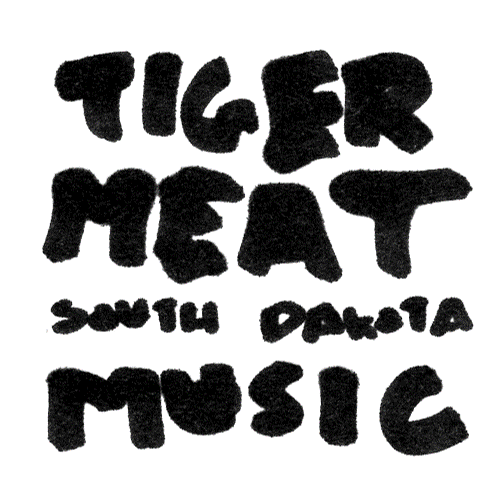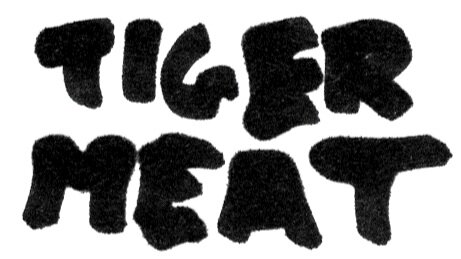Warm Wholes
As Sioux Falls Falls So Falls Sioux Falls Falls
2021 | Rock, Experimental
— track 5: "On the Way Down”
Qarl Koyzer: I studied engineering and production at the Institute of Production and Recording in Minneapolis, and then I’ve been working live sound for the past ten years. I worked for a company out of Sioux Falls and we travelled a lot from West River all the way out to Iowa City, Minneapolis, Omaha, just doing arena-level and festival-level shows. It’s been quite a journey. And so I’ve been able to experience and watch other real musicians play. Even if I don’t like their genre of music, I still like watching musicians play. I’ve learned a lot from that. I try to take little tricks that I see along the way and kind of pseudo-mimic them. I’m not a professionally trained musician by any means, but I just like sound and abstract art in general. I really just kind of got into sound engineering by someone else in our local scene. As kids we were in, like, hardcore bands and screamo bands and things of that nature, just being loud and frustrated, getting it all out. [Sound engineering] kind of stemmed from just loving it, and feeling it, and doing it, and then later in life having to figure out what to do with your life. After trying other things for a while I just realized I should try what I spend all my time doing anyway. Um, not saying it’s a great path for everyone, but I’ve really enjoyed it, and it’s worked for me. A lot of people ask me advice about how to do all that and it’s like, “I don’t know.” Everybody kind of falls into their own place, I suppose, or finds it.
And so I finally had a chance to sit down and record my own stuff. I’ve always just kind of fiddled around with any instrument I could. I grew up in rural, rural South Dakota, in the middle of nowhere, Southeastern South Dakota, kind of down by the Missouri River, in an area where it was hard to get lessons because we had to travel a lot. So everything I’ve learned has kind of just been like, “Hey, could you show me that?” or I’ll just try to feel it out, kind of thing. That’s hindered me in a lot of ways. I really envy and I really enjoy watching orchestral musicians and just their practice and dedication to their craft. Again, I just try to mimic things.
Dom [Marks] is my drummer friend. I hired him to record all the drums to these acoustic songs that I was going to build upon. He was going to come down and record in the studio that I work out of, which is the Warehouse Recording Studio, and it just didn’t work out timing-wise, so he just did it at home, and really nailed it. All the instruments are me except drums, and I didn’t want it that way. I’ve had this album in my head for a couple years. It’s a memoir to a couple friends who have passed away, who were very musically active in my life: A really close brother of mine who was the bass player in a band I grew up in, and then another close friend of mine later in life. Beautiful souls, and I have some captured audio on the album of them. You know, the album sheds light on suicide and drug overdose, things that are very prevalent in our society that people see as problems, and yes they are problems, but they’re more side effects, I believe. But the album is more of just an expression than a statement. I tried to rein in the resources to getting other musicians, and it just came down to: I just needed to do it at this point, and it was just — I was kind of tired of waiting on other people, as well as myself, or even blaming anyone else, it was just really I needed to get it done. So I finally got it done, and that’s where I’m at now [laughs]. I would love to work with musicians and, like, and really write an album. This whole album is really just kind of to show the dirt in the gutter. There’s trash everywhere, like, that’s life, and people kind of look over that, and kind of skim over it, which it’s okay if people do that with my album too, it’s literally just an expression. I just wanted to get it out and be done with it so I can move on to the next one.
TreeSpeak is up in Minneapolis. Beautiful recording studio. Full mixing, mastering. Incredible engineers, all really stand up people, just craftsmen with their tools. I really wanted to go up there and record it there, but again I just didn’t get enough people involved, and for me to record this all myself at one other studio would cost way too much. Which is why I got into recording, because I could never pay anyone to record as much as I do. I got to know [the people at TreeSpeak] through school. They’re great translators. That’s what engineering really is: it’s the translation from artist to audience. It’s getting the best capture and representation of a piece. I really trust Xander Moser, he’s just a really great engineer, so getting his opinion on a lot of my mixing things, without having to have him spend a lot of time on mixing, I was able to cut a lot of corners there. Mixing to mastering is like, the best way I say it is like painting: Mixing would be actually painting the piece and then mastering would be finalizing and framing. It’s a lot of leveling, just making sure everything is playable everywhere. There’s metadata, there’s different, like, little coding things that the master engineer does that the mixing engineer does as well, but it’s kind of an extra step to really finalizing, and making things right, and being able to track your music sales and streams as well. Master engineers ask all those questions of, “What’s the application?” This album, I’m only making for the internet and streaming. I don’t plan on printing anything, it’s a budgetary thing, really. The next album, possibly, I will do something else. And maybe this will come back around someday. There’s not much of a fan base, for one, but also it’s more content to create and there’s already so much shit out there, you know what I mean? Even my favorite bands, I love them, but there’s so many things that they try to sell. This album wasn’t made to sell, it’s a really-just-take-it kind of thing. This was a get it out, get it done, do it right, see the process, and go on to the next one.
I’m always creating. I’m always making music. I do a lot of field recordings. All the sound samples were actually recorded in Sioux Falls or the surrounding area, so the birds are all local birds, it’s local water, it’s the Sioux Falls falls themselves. I’m just a weirdo on that. I like sounds, and making it real, and, like, hiding those things, kind of, in music. Since we live in this digital age, I try to make it a little more realistic. [The “Personalized Field Recording Request Form” on Qarl’s website] is an experiment, more than anything, to see what happens, and to see what I’m asked to do, because then that’s more of an excuse to do things. I’m really driven by other people. There’s people, filmmakers, and video game makers, I would really like to collaborate with and bridge that gap in my career, and, like, really get into more sound design, things I can enjoy doing on my own that doesn’t take other people. But I really want to be in bands. I play guitar with Pale Norse and The Local Support. That’s been a really cool experience. It’s really therapeutic. And we have three guitar players, which as a sound guy is, like, a nightmare, but we actually don’t all play the same thing at the same time, so we balance each other really well. Like, you don’t have to be the best player in the band, everybody kind of just floats around each other. I recorded that album [Pale Norse and the Local Support] at the White Wall Sessions Studio. That really got me back into wanting to play, we played a couple shows together before the pandemic. Our album release date was right in that time when it all became real, like, “Oh, well, yeah, we’re not going to play a show.” But we will at some point. I got a couple other new projects going on. One of them’s called Fucked Up Dads. It’s literally just jamming out with a couple dads and we just tell fucked up dad stories and shit. Just trying to get back to playing again, playing with other people. I can only mess around on an instrument for so long until I get bored and need someone else to play with.
The album cover was physically made. My partner, Morgan Bentley, makes a lot of collage work and I commissioned her for the album. So everything was cut out of old, like, National Geographics and different things of that nature. We actually moved because our small apartment was getting too cluttered with all that, which is great, I really enjoy those environments anyway. I’ve been painting a lot. I get in weird things where I make visual art and then I make audio, and it’s kind of back and forth. The more clients I take on recording, the less I make, which makes sense, you know? You kind of get burnt out of the things you love when you do them all the time. I put a lot of time and thought into every single second of the music I work on, maybe not so much when I’m playing it, but when I’m engineering it for sure. Painting is just kind of a meditation thing for me, much like mixing can be. When I was in Minneapolis, the school I went to was connected to a couple other buildings. They had this art class for mentally challenged and people going through a lot of trauma and stuff, and they would hang their art throughout the room. I’ve had a lot of weird things happen to me in my life that have gotten me down, and that art really picked me up quite a bit, and it really just taught me you can doodle anywhere and just kind of scratch some stuff out. I’m a huge proponent of just doodling. Everybody does it. Everybody claims they’re not an artist but everyone is. You don’t have to make art to be an artist, like, if you look at a piece of art and you’re observing it then you are a part of that art in a way. I just make art just to feel good. I don’t really know what I’m making most the time, it just kind of comes out and finds its way. I just really like looking at the wind. It just comes down to that. I just like watching the wind and going different places, and hearing different things, and being in different environments, mainly. I just want to sell hot dogs and hats on the beach someday, like, that’s my endgame.
QARL KOYZER’S ESSENTIAL SOUTH DAKOTA ALBUMS
Green Altar — Heavy Side of the River [Plague Remix] (2020)
High Rise — Movin Fast (2020)
RIFFLORD — 7 Cremation Ground/Meditation (2018)
Lot Lizard — Lot Lizard (2019)
Stem Cells — Stem Cells (2020)
Mat D — Phantom Locomotive (2021)
Low Riding Moths — “Cat Island” (2016)
SOURCES
Koyzer, Qarl. Interview. By Jon Bakken. 7 May 2021.











